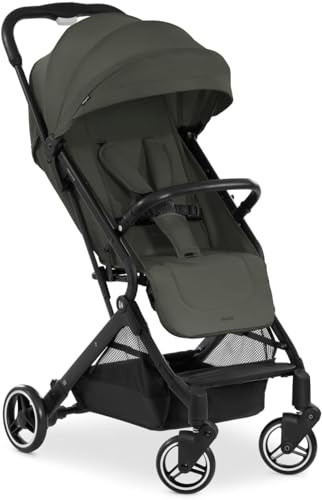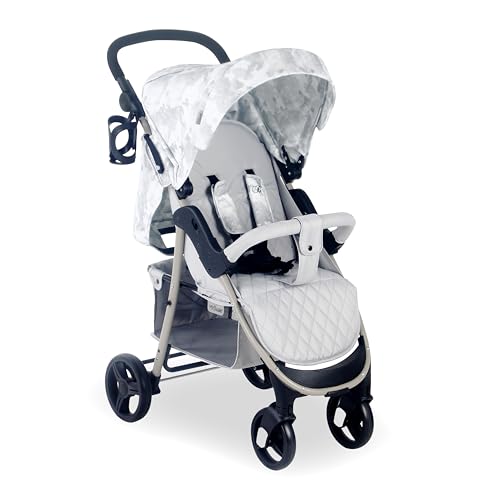This Week's Most Popular Stories About Pushchairs From Birth Pushchair…
페이지 정보

본문
 Choosing Pushchairs For Your Baby
Choosing Pushchairs For Your BabyA stroller, buggy or pushchair can be used to transport children. Newborns need to lie flat, which is why prams come with a carry cot or bassinet and some come with a frame that you can fix the cot to.
Once your baby can sit up and has a good head-control when sitting up, you can put them in the stroller with seats that face away or toward you. Many have handy features, such as the swivel wheels and enclosed carrycots that can be used in 3 in 1 systems.
Rear-facing
There are a variety of options to choose from when it comes to choosing the right pushchair for your new baby. These include prams pushchairs, buggies, and strollers. Although the terms are like they're interchangeable, there are important distinctions. A pram is typically designed to lie-flat while a pushchair allows an upright position. Some babies can use both, but some will require a carrycot to help strengthen their necks and heads to sit comfortably.
The majority of experts agree that it is recommended to use a baby pushchair with the parent facing forward for babies until a few months old. Babies are drawn to their parents and the emotional connection this provides. This eye contact is essential to their emotional development as they learn to process the information around them. They also start developing language skills when they observe the way their parents interact with them.
When babies are able to see their parents, they feel more secure and confident. They know they can count on their parents to safeguard their children and guide them through their environment. This early trust can boost an infant's confidence and well-being when they grow into toddlers and discover the world on their own.
A pushchair that is positioned for parents lets you easily check on your baby while they are in their seat. It's easy to make sure that they're comfortable and content, and also that their hat hasn't fallen over their eyes or the wind isn't blowing into their face. Babies who are able to see their parents are more likely to sleep because they feel at ease by their familiar faces.
If you want to keep your child in a pushchair with a parent's view for as long as possible there are a variety of options to pick from. Some pushchairs are able to be switched between parent-facing or forward-facing, and some have an extendable footmuff that can keep out cold air or a rain cover to protect your baby from the elements. The Eezy S Twist+2 is a great model of a flexible pushchair that can switch from a parent-facing to forward-facing seat unit at the flick of an lever. It can be equipped with a Cocoon S Car Seat, Cot S Carrycot, or the carrycot for a four-in-one travel system.
 Forward-facing
Forward-facingA Pushchair sale uk that is forward-facing allows children to explore the world around them and take in the sights, smells and sounds around them. They can also see their parents, which is very important for the social development of your baby. Depending on their individual development milestones, most babies will be ready to switch from the carrycot or pram for newborns to a forward-facing pushchair around six months. If they have enough head and neck control to be able to safely face forward, it's the time.
Research shows that when babies are facing their parents in a front-facing pushchair and they are more likely to talk back and have a lower heart rate, which suggests that they are less stressed. They are also more engaged in what is happening around them and their parents which can help stimulate their minds and improve their language skills. Parents are more likely to talk with their child when they are able to make eye contact with them, which is an reassuring and soothing experience for them.
You can use a pushchair with a front-facing seat since the time of birth. This allows you to go on longer walks. You can take your child shopping or take them to other activities requiring walking. A stroller or holiday pushchair will allow your child to experience the same activities as their older siblings, which can help build their confidence and self-esteem.
You should choose an infant stroller that comes with a wide range of accessories, including an infant blanket, footmuff and seat liner. When the weather is hot, a hood or parasol can help protect your baby. Look for a parasol that has an SPF or UV 50+ rating, and make sure it's designed to fit your pushchair and is easy to attach. Certain brands offer a range of accessories. Some are available together with the egg pushchair sale while others are available separately.
Many pushchairs can be converted to double-sized by adding an additional seat unit or carrycot which is especially useful for families expecting a second child soon after the first. Some models include everything you require for the conversion, whereas others come with a separate converter kit.
All-terrain
For those who live up the country tracks, love a woodland walk or spend many hours walking, you'll need an appropriate pushchair for rough terrain and muddy fields. All-terrain strollers are designed to take on any terrain. They are equipped with features such as suspension that cushion bumpy rides, so your child won't get shaken up. The seat is tilted to evenly disperse the force of the bumpy terrain to the head and neck of your child.
Most all-terrain pushchairs are three-wheelers and have a front wheel that can pivot and lock into position for maximum maneuverability, which is important on rough surfaces. They'll also typically have bigger tires than your typical pushchair, meaning they can handle rougher paths and have more comfort for your child.
Another thing to consider when looking for an all-terrain pushchair is whether the wheels are filled with air or foam. Air-filled tyres can create more comfort on rough terrain, but they can also puncture more easily when you hit something sharp. Foam-filled tyres last longer and are less likely to puncture, which is why they are a better choice for a pushchair with all-terrain capabilities.
Many all-terrain pushchairs can be converted from single mode to double for families that are growing, and some can even be used as a travel system with car seat adaptors, making them excellent purchase for parents who are expecting. Some models, like the Out 'n' About Nipper are suitable for babies due to their sloping seats and the fact that you can carry a cot with them.
The Nipper also comes with a range of pushchair accessories such as a raincover and the footmuff. It's easy to store as it folds up compactly in one hand and can stand on its own when folded. It also comes with the 360-degree swivel lockable front wheel and foam-filled never-flat tyres, which mean you don't need to worry about getting punctures on your walks.
Weight
The choice of the best pushchair is a major decision that will affect the manner you take your baby. The right model will allow your child to develop and grow in a comfortable environment, giving you the chance to take advantage of all the family adventures that are yet to come. It's an investment of a large amount, so be sure to check that you choose the one that fits your needs and budget.
The first step is understanding the distinction between the pram, pushchair and buggy, as well as the distinctions between a travel system and single pushchair comparison. This guide will break down the jargon to make it easier for parents to determine what is best for their new baby.
As the name suggests the pram is made for newborns or babies between 6 and 6 months of age. It allows your baby's back to grow properly by allowing them to sleep on their backs. Some models have a bassinet which can be used in the early months to give your baby a safe, secure environment.
You should be aware, however, that not all pushchairs which claim to be flat do exactly that. Be wary of manufacturers of claims that a pushchair can recline flat. Always read the fine print to discover what this actually means. Some pushchairs can only offer the slightest amount of recline, which is more than a fully-reclining seat.
If your baby is able to sit without assistance, it's the perfect time to place them in a pushchair. It usually happens between three or four months, however some littlies will begin sitting up much earlier. It is recommended to purchase a pushchair which can convert from a carrycot to a seat. This will allow you more flexibility and help keep your child safe until they are able to move forward.
Parents would prefer a lightweight pushchair with a single pedal to brake, especially when they want to talk or carry shopping bags in their hands. Jessica who is our MFM home tester, gave this model an A+, stating that "it handles superbly, with a smooth ride and the one-handed fold is an absolute delight". The lightweight model is equipped with Tru-Ride tyres, which are durable puncture-resistant and offer excellent performance.
- 이전글Find Out What Retro Espresso Machine Tricks Celebs Are Using 24.09.16
- 다음글11 Ways To Completely Redesign Your L Shape Leather Sofa 24.09.16
댓글목록
등록된 댓글이 없습니다.